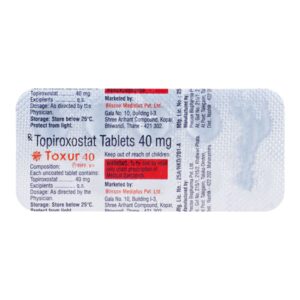TOPIROXOSTAT
TOPIROXOSTAT: Topiroxostat is a medication used for the treatment of hyperuricemia, which is a condition characterized by high levels of uric acid in the blood. It is primarily prescribed for patients with gout who have not responded well to other therapies.
The mechanism of action of topiroxostat is its inhibition of the xanthine oxidase enzyme, which is responsible for the production of uric acid. By blocking this enzyme, the drug reduces the production of uric acid, which in turn helps to lower blood uric acid levels.
The typical dose of topiroxostat is 40 mg taken orally once daily. However, the recommended dose may vary depending on the individual’s condition and the severity of hyperuricemia. It is important to follow the dosage instructions provided by the healthcare professional or as indicated on the prescription label.
As with any medication, topiroxostat may cause some side effects. The most common side effects reported include liver function abnormalities, gastrointestinal symptoms such as diarrhea, nausea, and abdominal pain, and skin rash. Less common side effects may include dizziness, headache, and increased blood pressure. It is important to inform a healthcare professional if any side effects occur or worsen.
It is worth noting that topiroxostat may interact with other medications, so it is essential to inform the healthcare professional about all current medications to avoid any potential drug interactions.
Overall, topiroxostat is a medication that is prescribed for the management of hyperuricemia in patients with gout. It works by reducing the production of uric acid and has a recommended dose of 40 mg once daily. As with any medication, topiroxostat can cause side effects, and it is important to consult with a healthcare professional for proper guidance and monitoring during treatment.

